Words Posy Gentles Photographs Edmund Ford and Posy Gentles
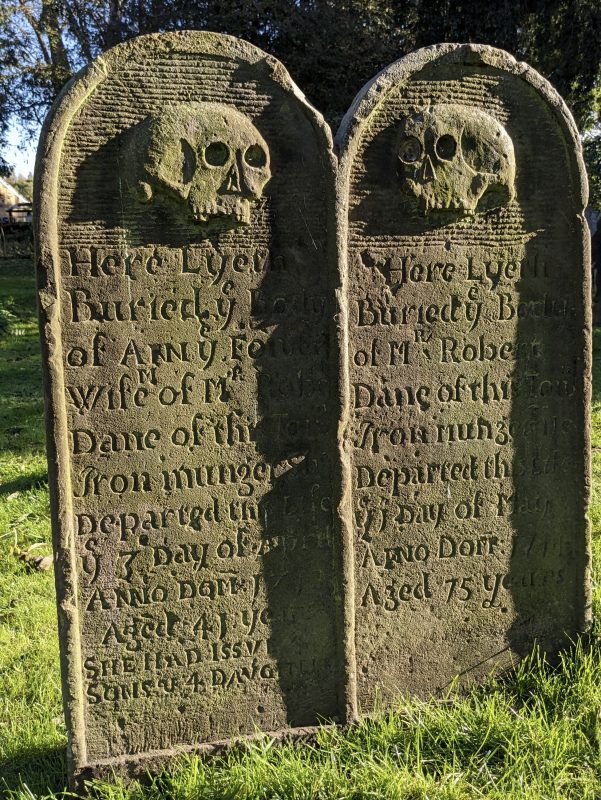
The churchyard is large and was extended twice. In 1898, the Faversham Borough Cemetery opened in Love Lane. Burials ceased at the churchyard of St Mary’s in 1906
The churchyard of St Mary of Charity in Faversham, though large, is modest. There is no full-sized horse such as that which graces the Sanger Memorial in Margate, no weeping angels in Pre-Raphaelite robes. Yet under the trees – the Judas trees, the handkerchief tree, the huge spreading holm oak and plane trees with enormous bulbous carbuncled trunks – the gravestones offer much to interest the attentive observer.
Lichens, white-lipped snails and ladybirds
The vivid mustard yellows, arsenic greens, scab reds and milk-grey whites that smear and encrust the stones are lichens – some possibly as old as the gravestone itself. Faversham Life consulted The British Lichen Society which says: ‘Churchyards are of supreme importance for lichen conservation, particularly where there are no natural outcrops of rock.’ Of the 2000 British lichen species, more than a third have been found growing in churchyards and more than 600 have been found growing on church stone in lowland areas like Faversham. The Society says: ‘Almost half the species are rare and seldom if ever occur in other habitats.’ (Disclaimer: Any identification given below should be doublechecked as this FL writer is no naturalist).
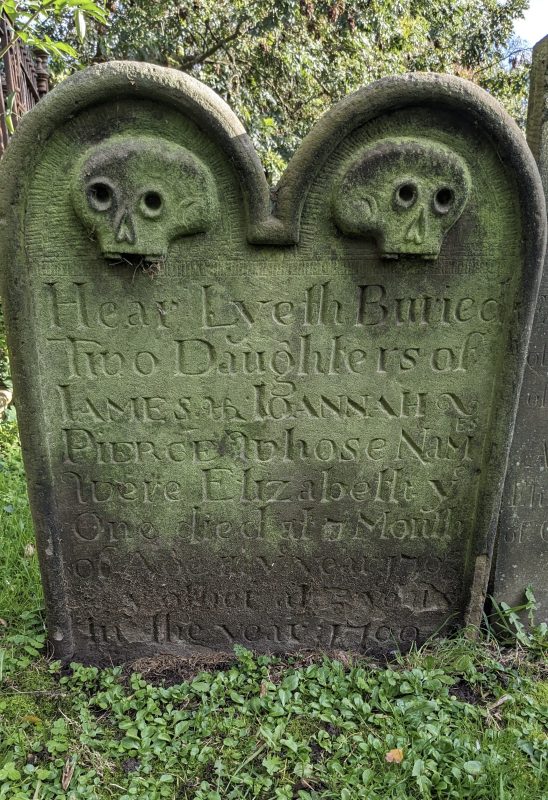
Gravestones provide an excellent habitat for rare lichens

Psilolechia lucida picks out details, enjoying the habitat of recessed engraving
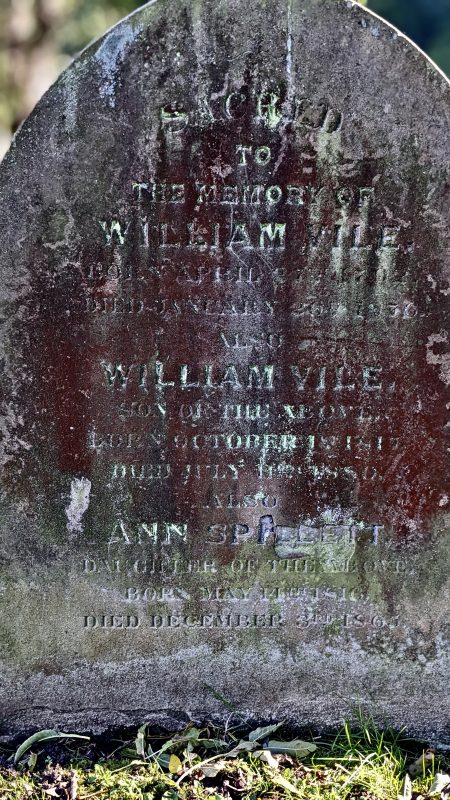
Red lichen transforms the gravestone of the impressively-named William Vile. FL failed to discover the name of this lichen and was put out to find that, on googling ‘lichen on gravestones’, numerous sites for cleaning it off emerged. One product was called ‘Wet and Forget’ – too horrible!
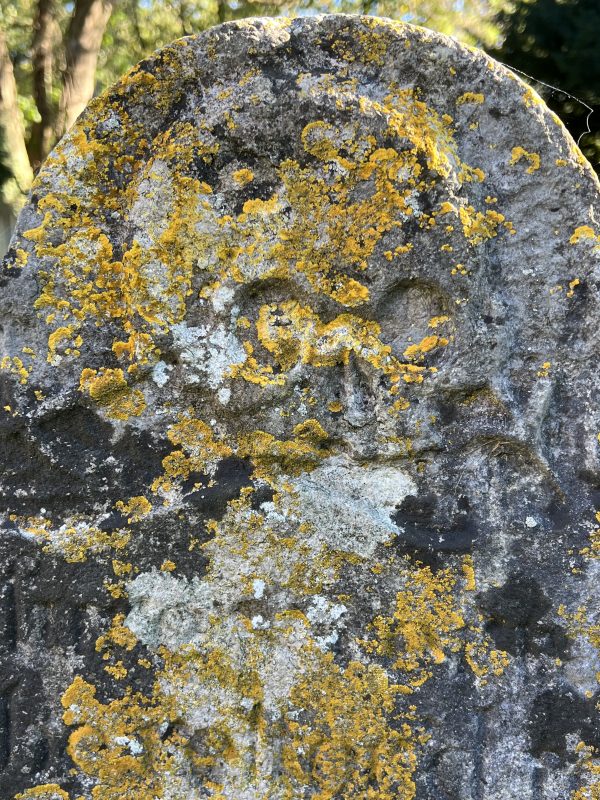
A skull glares through a mask of Caloplaca flavescens
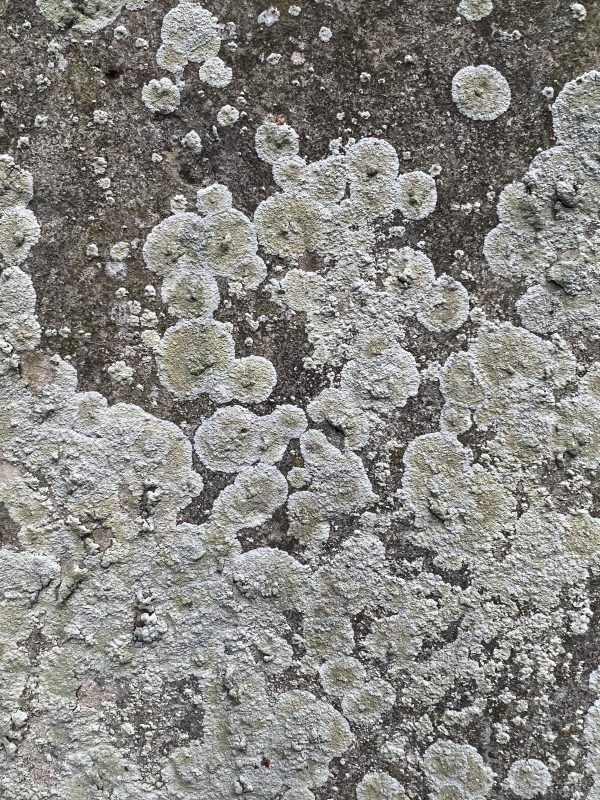
Grey and white crustose lichen
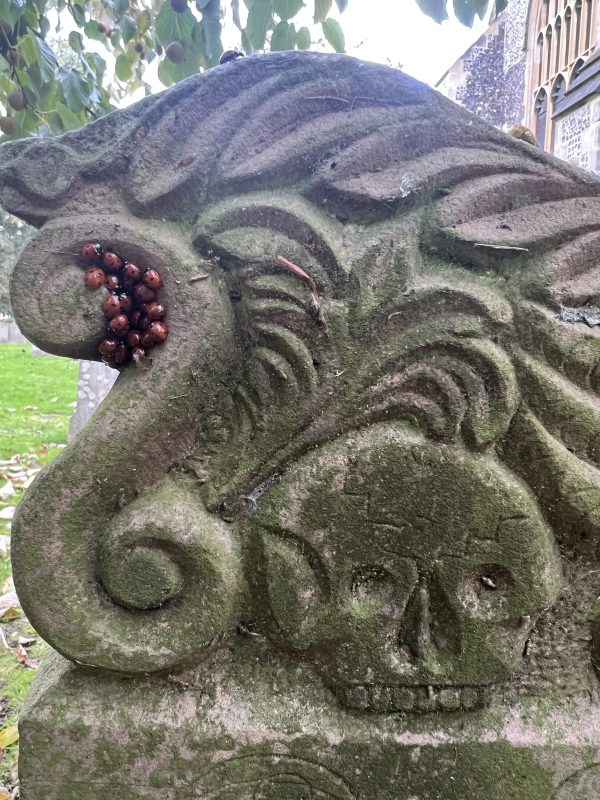
A cluster of ladybirds
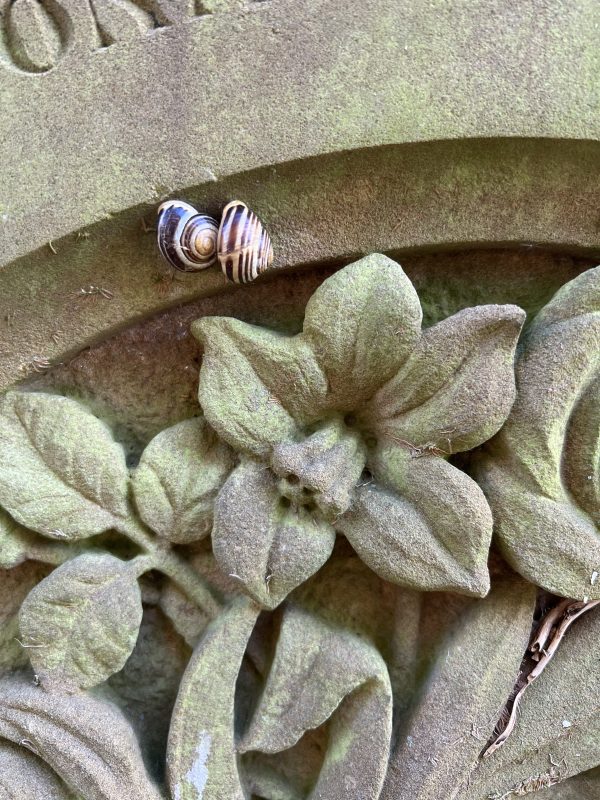
A pair of white-lipped snails
Surgeons and Drudgers
The 18th century gravestones in St Mary’s churchyard often give the occupation of the interred and mention that they were: ‘Of this town’. There are several drudgers, the definition of which eludes this writer.
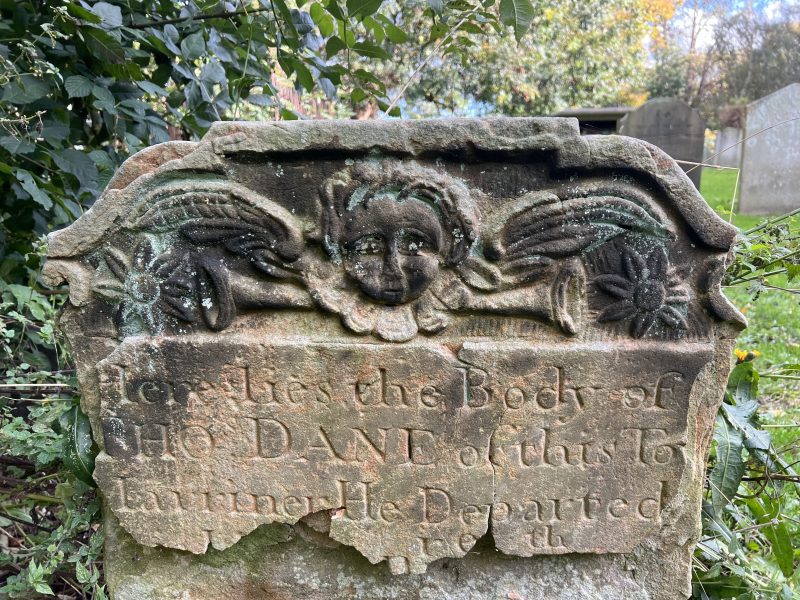
Thomas Dane, Mariner
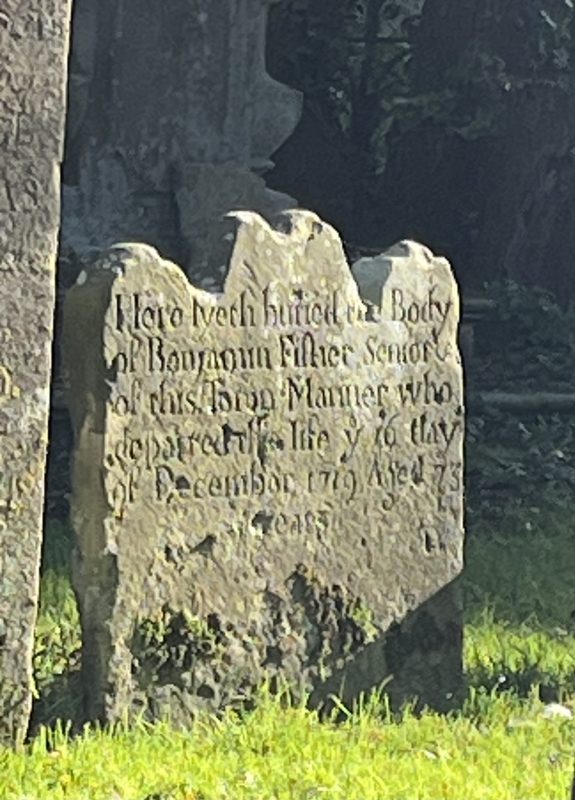
Benjamin Fisher, ‘senior of this town’, mariner, died in 1719 at 73
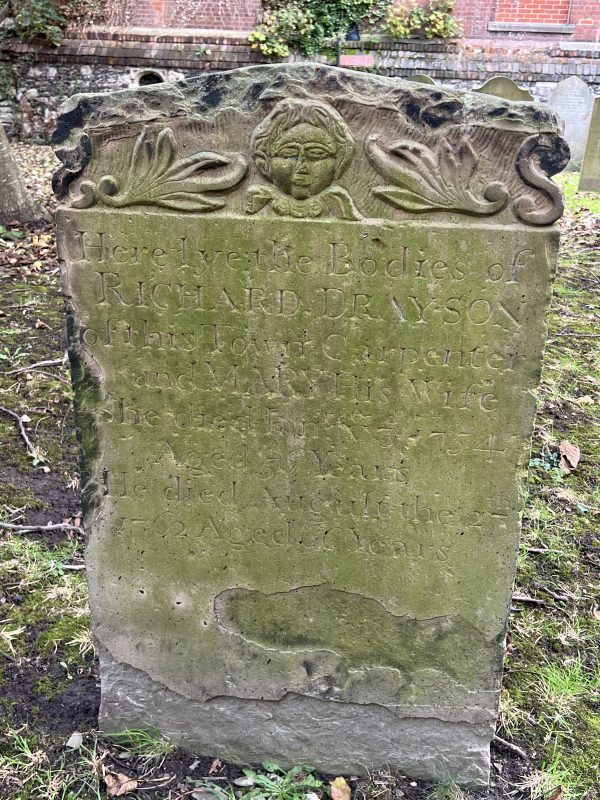
Richard Drayson, carpenter, died 1762

Henry Gibbs, surgeon, and his wife Elizabeth, daughter of Henry Knowler
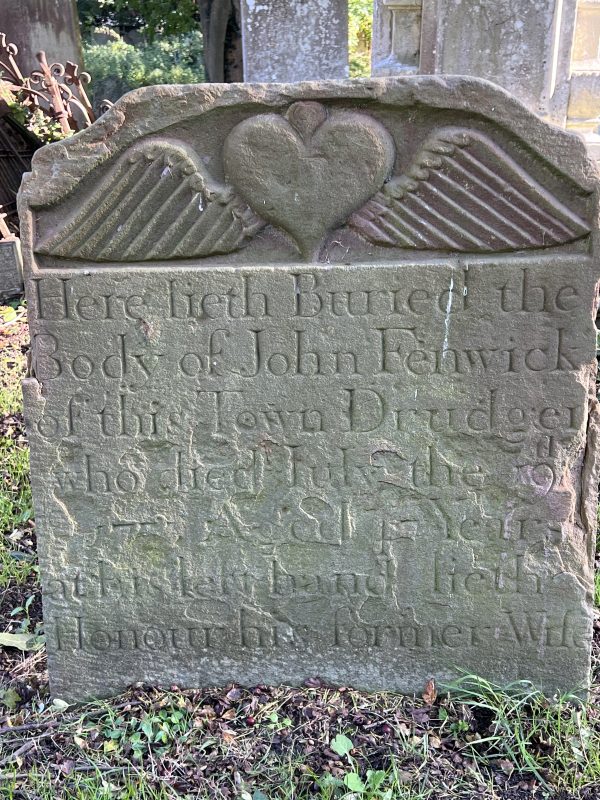
John Fenwick, drudger of this town
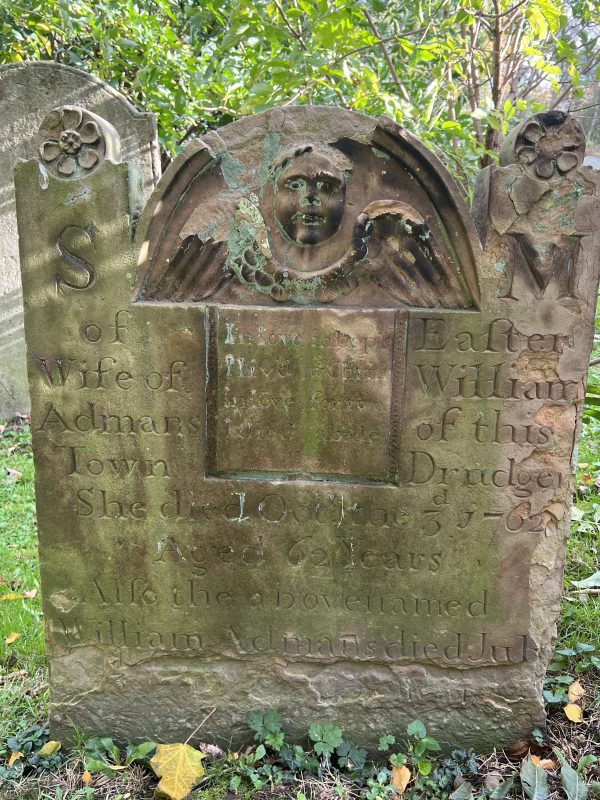
William Admans, drudger, and his wife. ‘In love I liv’d/ In love I died/ In hopes/ with Christ/ For to abide’

Richard Down (the rest of his name may be missing), drudger of this town
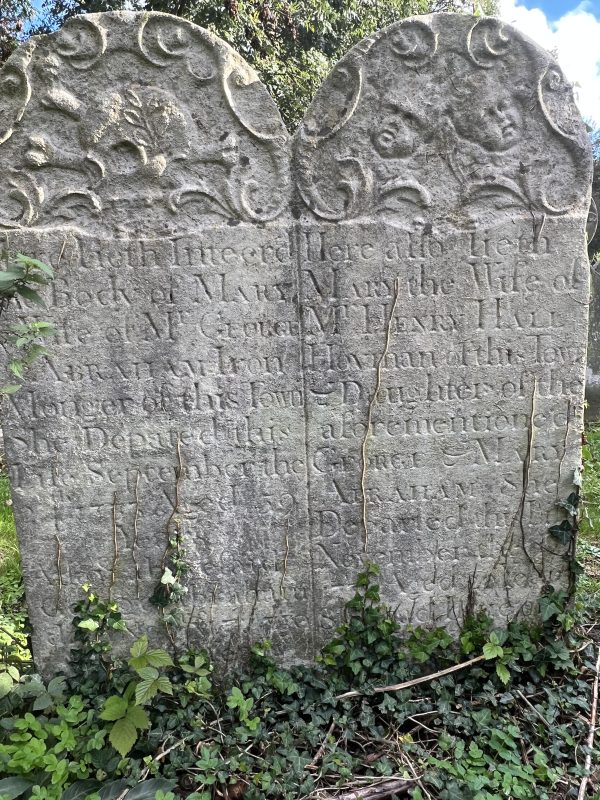
Mary, wife of Mr George Abraham, ‘ironmonger of this town’
A few words
By the 19th century, temporal matters such as occupation and ‘Of this town’ were no longer written on the gravestones. They had been replaced by more spiritual concerns, often in the form of a little rhyme. Euphemisms for death start to predominate – ‘Here lies the body’ has been replaced by terms such as ‘Fell asleep’ and ‘Departed this life’.
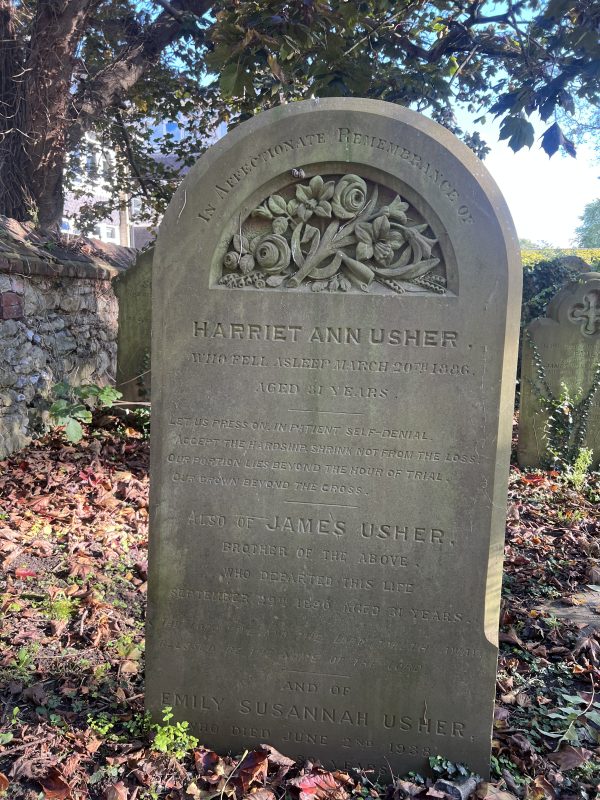
Harriet Ann Usher, who ‘fell asleep’ on March 20th 1886 aged 81 years. ‘Let us press on in patient self-denial/ Accept the hardship, shrink not from the loss./ Our portion lies beyond the hour of trial,/ Our crown beyond the cross.’
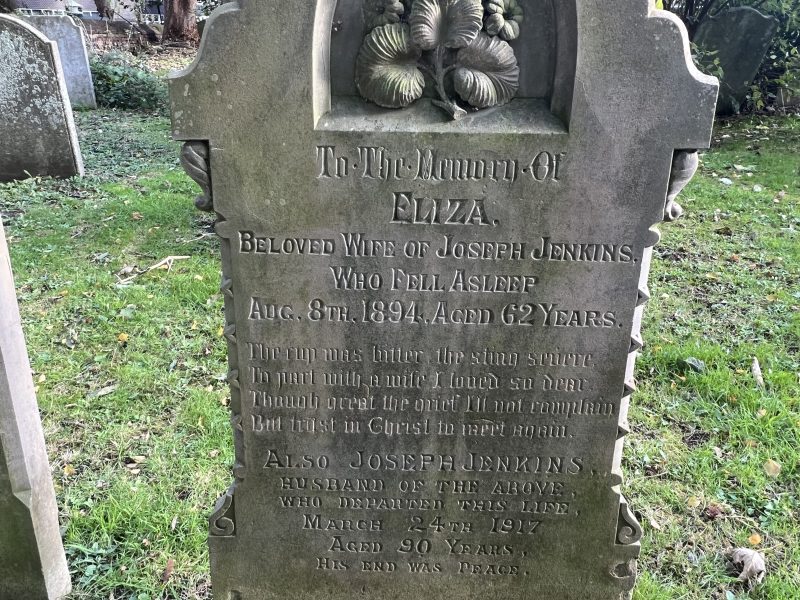
Eliza who ‘fell asleep’ in 1894, and her husband Joseph who ‘departed this life’ in 1917. ‘The cup was bitter, the sting severe,/ To part with a wife I loved so dear./ Though great the grief, I’ll not complain/ But trust in Christ to meet again’
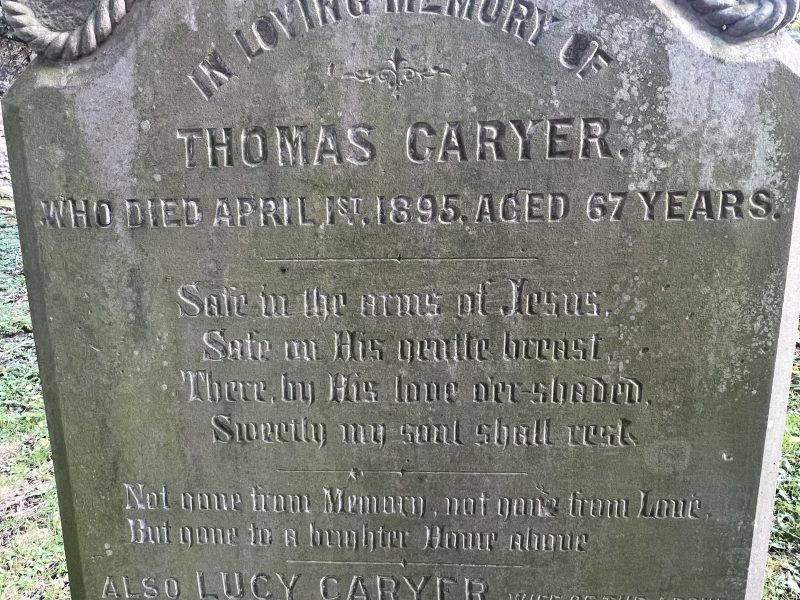
Thomas Caryer, died in 1895. ‘Safe in the arms of Jesus,/ Safe on His gentle breast/ There, by His love o’er-shaded,/ Sweetly my soul shall rest’
Skulls and cherubs
Many of the earlier stones feature skulls. Their rather lugubrious expressions are far less sinister than the leering, double-chinned, lichen-encrusted cherubs.
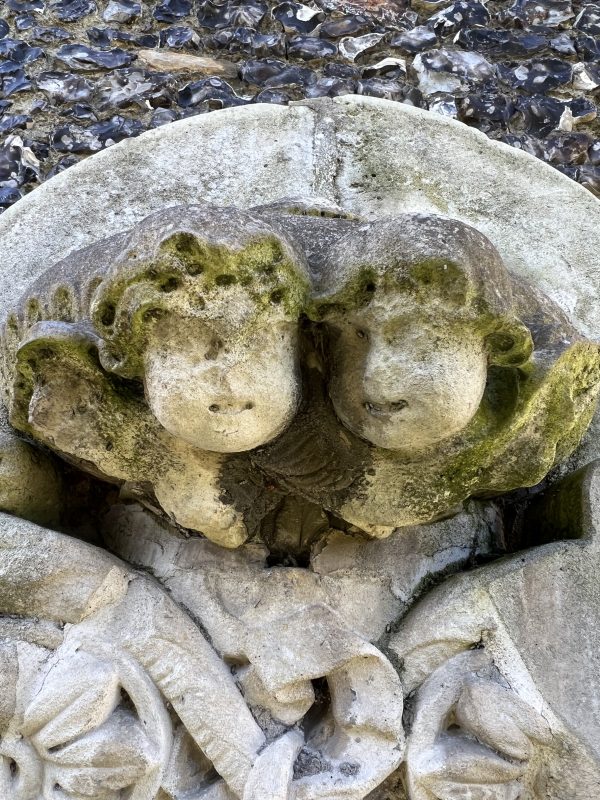
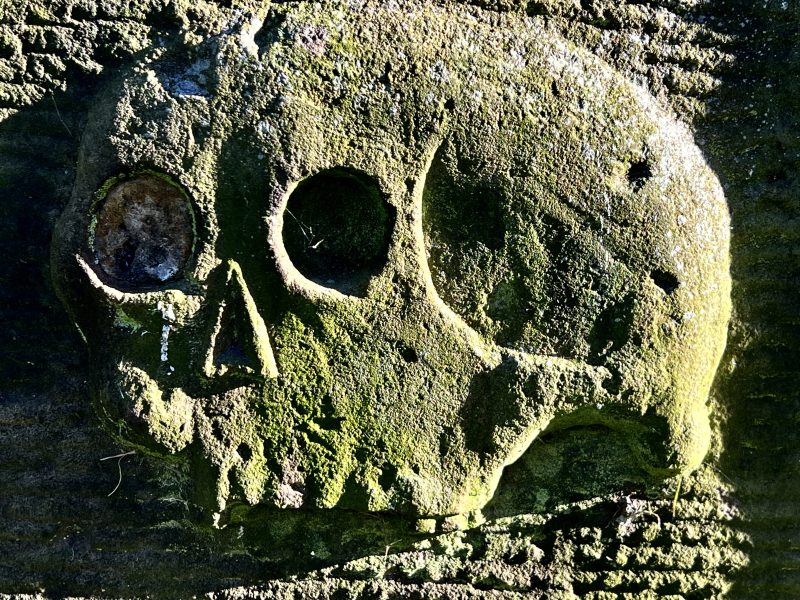
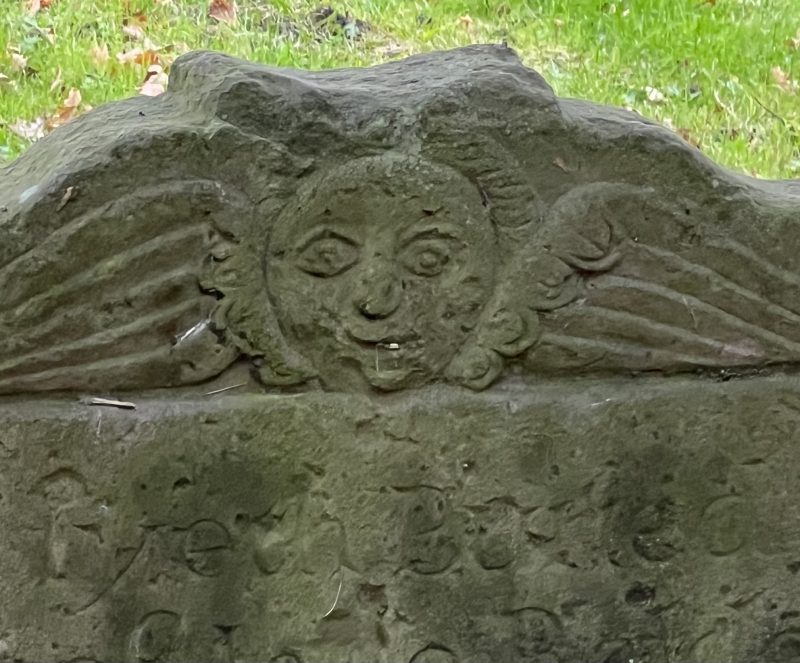
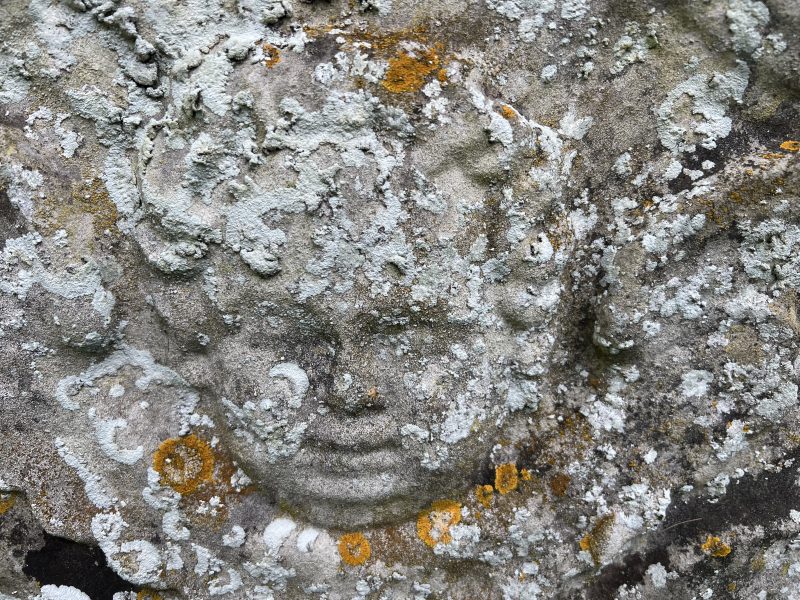
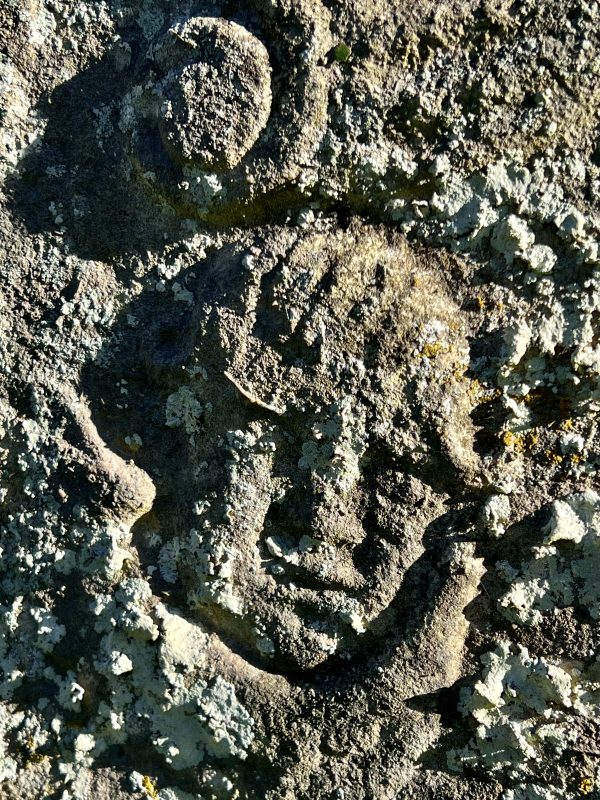
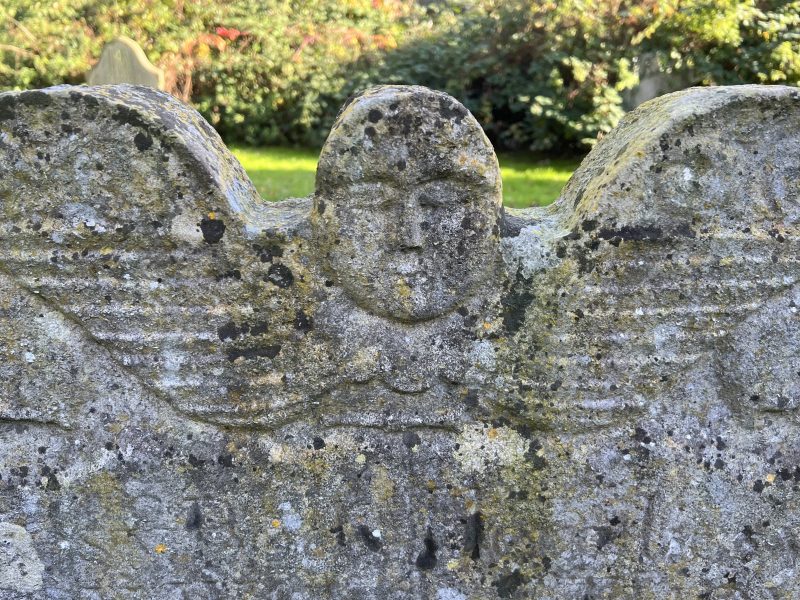

Several enthralling discoveries
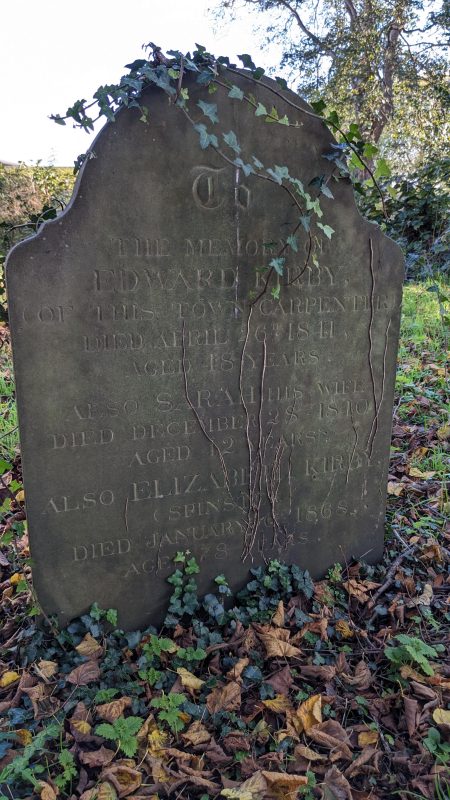
Town carpenter Edward Kirby, died at 18 in 1842, two years after his wife Sarah who died when she was 12. Until the Age of Marriage Act in 1929 which fixed the minimum age for marriage at 16, the minimum marriageable age was 12 for girls and 14 for boys

Among the Williams, Johns and Richards, the magnificent name of Augustus Felix Fairbrass stands out
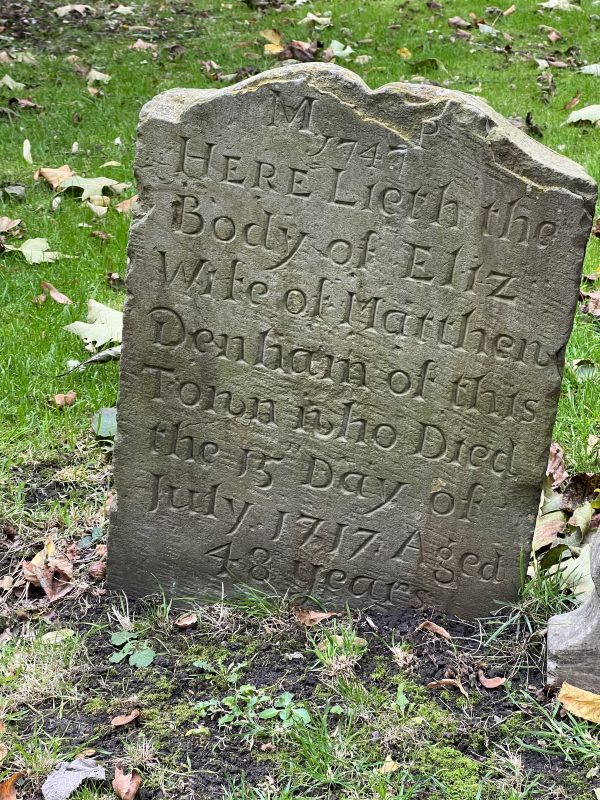
Despite a forgivable lurch, this 300-year-old gravestone from 1717 reads clearly
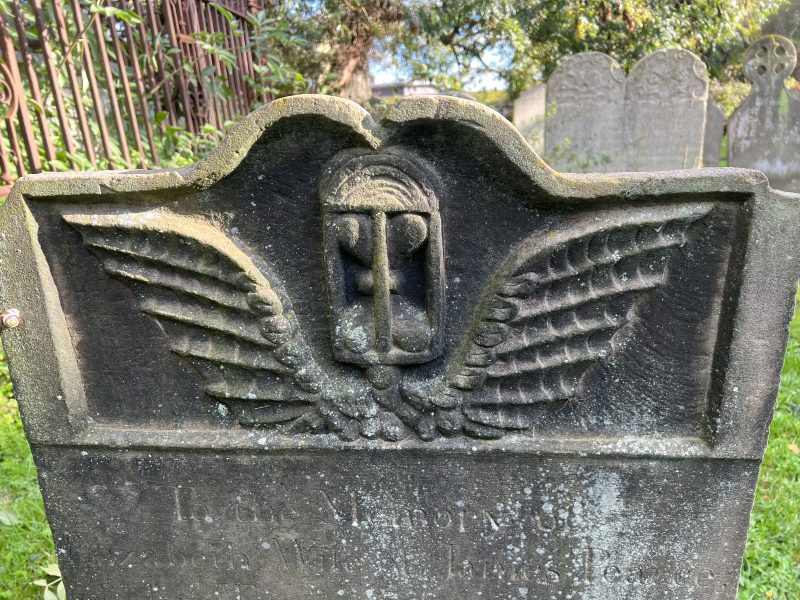
This 18th century carving has an almost modernist vibe
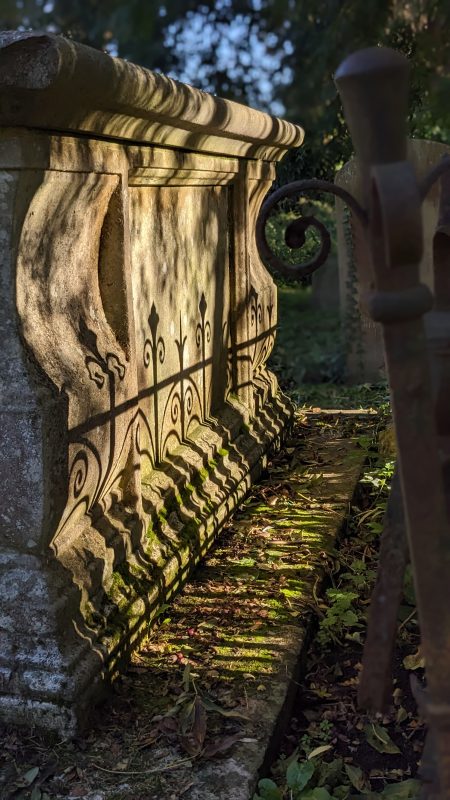
Sharp shadows
Text: Posy Gentles. Photographs: Edmund Ford and Posy Gentles
The British Lichen Society: for information on lichen in churchyards, click here
12 November: Make a Book of Autumn with Amanda Thesiger as part of Faversham Tree Week 2023 at St Mary of Charity. To book, click here